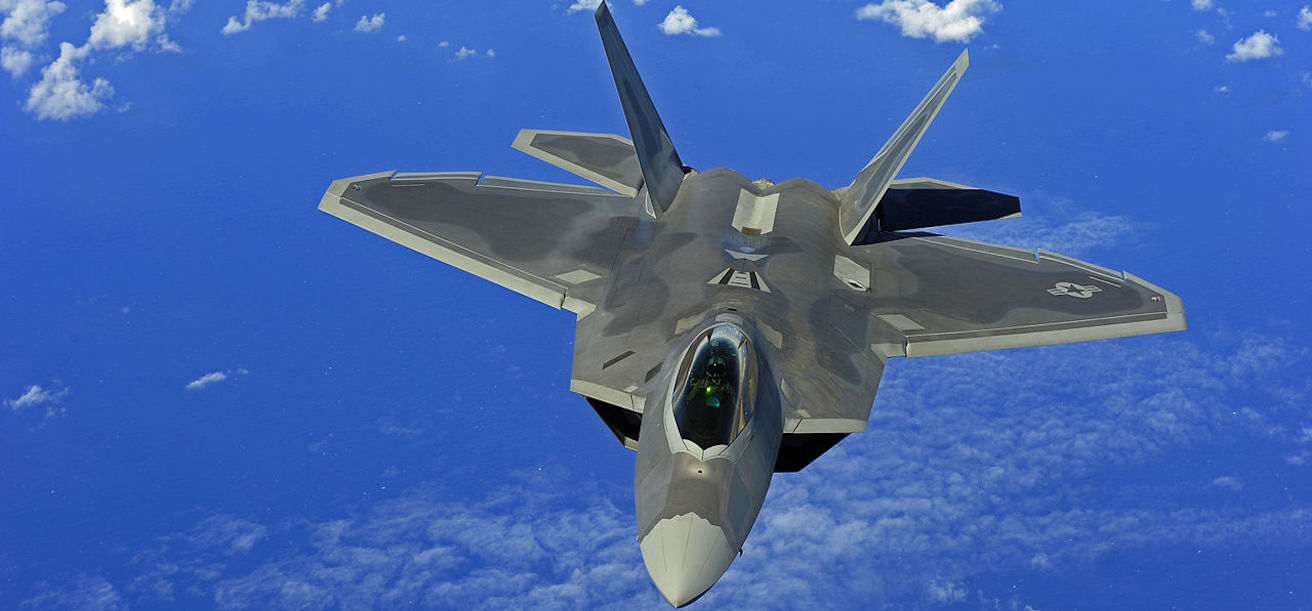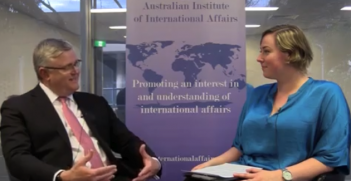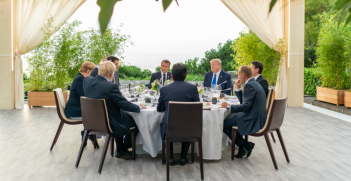North Korea’s Nuclear Challenge: The Key Players

Pyongyang’s looming nuclear-weapons capability is a strategic game changer for the region, with China emerging as the surprise winner.
North Korea’s nuclear ambitions have had three legs. First, it has been making bombs. Until recently it was thought to possess around 20 but on 8 August, The Washington Post published revised US intelligence assessments that it may already have 60.
Second, Pyongyang has been working on missiles, including intercontinental ballistic missiles (ICBMs). Tests in March and July proved it had acquired ICBM capability to put much of mainland US (and Australian) cities within striking distance.
Third, North Korea has been working on miniaturising warheads to fit them on the nose cone of missiles. The revised intelligence assessment concluded it has succeeded. A fully-fledged intercontinental nuclear capability is now within reach, although further work may still be needed to make warheads robust enough to withstand the rigours of re-entry into the earth’s atmosphere and the accompanying extreme temperatures and vibrations.
This is a strategic game changer and a direct challenge to US President Donald Trump’s insistence that it is unacceptable and would not happen on his watch. His initial reaction was characteristic bluster, channelling President Harry Truman’s remarks regarding the atomic bombing of Japan in 1945.
Unwisely, Trump threatened to rain fire and fury on North Korea if it made any threats against America. Pyongyang called his bluff immediately by threatening to vaporise Guam. Trump then dialled back to the more standard US line that any attack on the US would unleash the full fury of US military might on North Korea.
The exchange of inflammatory rhetoric showed both leaders to be blustering and blundering megalomaniacs who pose a clear and present danger to world peace. Kim Jong-un may already have achieved one major goal of being treated as an equal by the US.
The sobering reality is that Trump—believed by 62-75 per cent of the world’s people to be dangerous, arrogant, intolerant and unfit to be president—would not face any domestic checks on his untrammelled authority to use nuclear weapons. The existing protocol has been designed for speed and efficiency, not deliberation, and permits the president to launch nuclear weapons with a single verbal order.
A war could directly involve four nuclear-armed states (North Korea, US, China, Russia) and also South Korea, Japan and possibly Taiwan. A premeditated nuclear attack is unlikely. Rather, the risk of a war that neither side wants lies more in the possibility of miscommunication, misperception and miscalculation that could see the cycle of provocation and escalation spin out of control. For example the tweet-prone Trump’s threats could spook Kim into launching a pre-emptive strike against an American attack he thinks is imminent. Or Kim’s serial provocations could trigger a South Korean or US retaliation that gets caught in an escalation spiral.
A US first strike on North Korea could not be certain of eliminating its entire nuclear capability. It has lived with hair-trigger sensitivity to a US attack for decades, placed nuclear assets on solid-fuelled missiles aboard mobile launchers so they are harder to detect and can be fired at short notice, dispersed them, and concealed some in mountain hideouts. North Korea also has a formidable conventional artillery capability to hit hard at nearby Seoul and other targets in the south.
The harrowing thought for South Korea and Japan is that if the logic of Trump’s ‘America First’ policy is followed through to its brutal conclusion, millions of Japanese and Korean deaths are an acceptable price for taking out North Korea’s nuclear capability now, before they pose a threat to major US population centres. This would be a deeply immoral calculus, but few have confidence in Trump’s capacity for moral reasoning. On 15 August, a clearly worried South Korean President Moon Jae-in warned publicly that any action against the North would require the South’s consent and he renewed calls for dialogue with the North.
Incendiary US rhetoric is also self-defeating. It strengthens North Korean motivation and determination regarding the bomb. Siegfried Hecker, former director of the Los Alamos National Laboratory (1986–97), was told by senior North Korean officials that “if Slobodan Milosevic in Serbia, Saddam Hussein in Iraq and Muammar Gaddafi in Libya had had nuclear weapons, their countries would not have been at the mercy of the Americans and their regime-change tactics”. In 2011, Iran’s supreme leader Ayatollah Ali Khamenei said the same thing about Gaddafi vis-à-vis Iran. This April, North Korean officials said the US airstrikes on Syria vindicated their nuclear choices ‘a million times over’. The inability of the US to see how its actions worsen the proliferation challenge is an enduring mystery.
The surprise winner from the crisis is China. President Xi Jinping has been circumspect, calm and statesmanlike, urging restraint on both sides and calling for a phased program to reduce tension on the peninsula. Each new tweet and step on the escalation ladder does further damage to the US reputation for responsible global leadership while boosting China’s profile and prestige. It also helps to obscure China’s own past culpability in enabling North Korea’s nuclear program while underlining the history of US forcible regime change as the main driver of Pyongyang’s nuclear ambition. Any retaliatory trade measures against China would cause substantial damage to the US economy and also to US allies in global supply chains that run increasingly through China.
Stability and conflict-avoidance in its own immediate region remains a vital national interest for China in order not to distract the country from its priorities of development and peaceful rise. But even China’s leverage over Pyongyang is limited. Any further weakening of Pyongyang’s links with Beijing and Moscow will only feed Kim’s security paranoia and reliance on nuclear weapons as the only assured guarantee of regime and personal survival.
US threats likely also stir memories among elderly Chinese of how they were treated in the early years of China’s own nuclear program. Nor have Chinese forgotten the 200,000 soldiers who died in the Korean War, although I am informed that younger scholars have begun to point out that their sacrifice was caused by North Korea’s reckless aggression.
Regardless, in Beijing’s eyes the US provokes a crisis with threats, war games and aggressive military exercises, and then holds China responsible for solving it. North Korea’s history indicates its criminal leadership is not suicidal, while nothing in Trump’s career inspires confidence in the quality of his decision-making. On balance, in China’s calculation the status quo of a nuclearised North Korea, however unpalatable, is preferable to the upheaval that would result from military strikes or regime collapse.
Japan and South Korea have managed to live for years with the reality of being within range of North Korea’s nukes. It may be time for all others to do the same, while working to achieve worldwide nuclear abolition under a verifiable and enforceable global compact.
Professor Ramesh Thakur, a former UN assistant secretary-general, is the director of the Centre for Nuclear Non-Proliferation and Disarmament in the Crawford School of Public Policy at the Australian National University.
This article is published under a Creative Commons Licence and may be republished with attribution.





